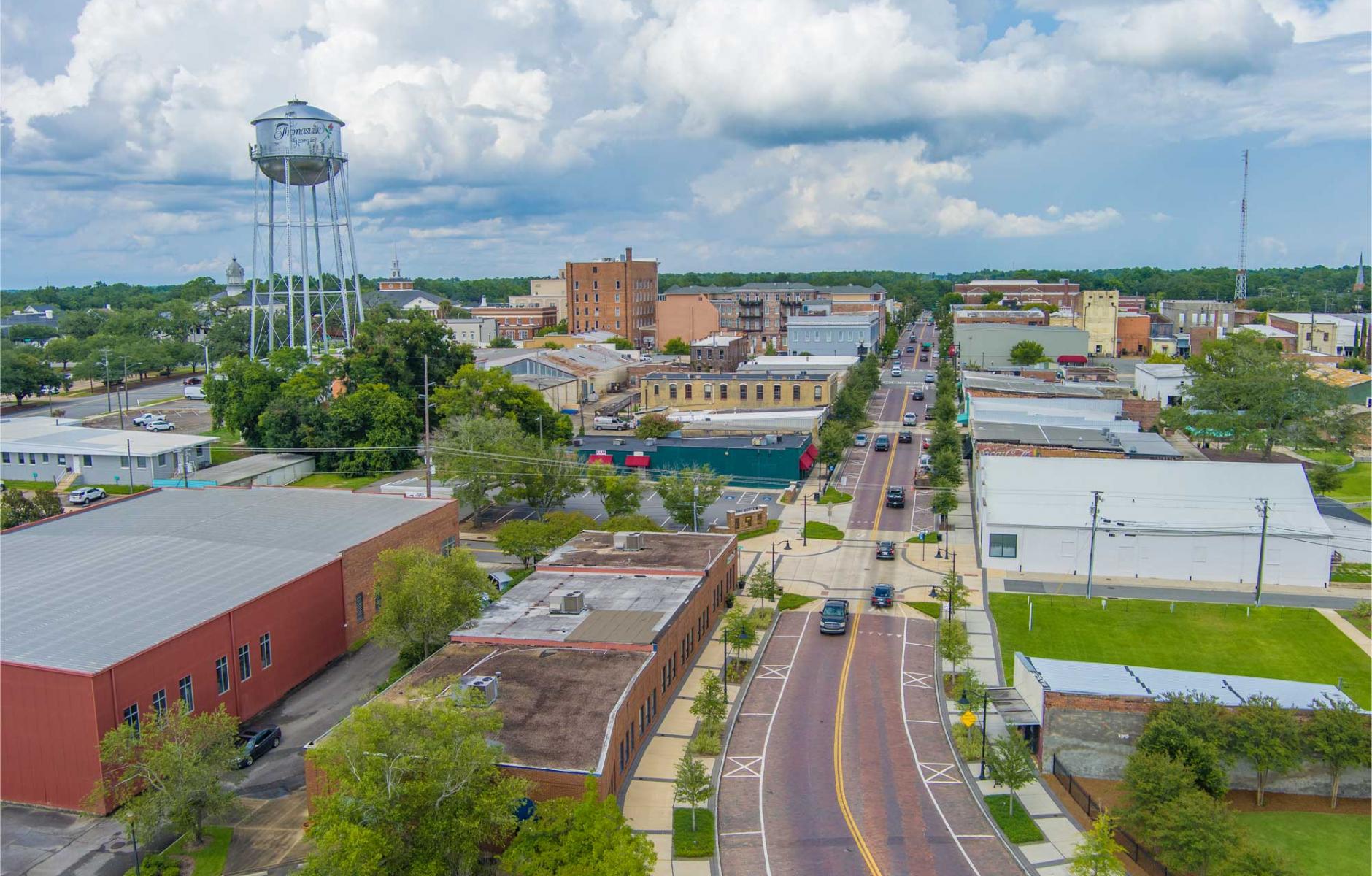
A Blueprint for small-city reinvestment
Thomasville, Georgia, is a majority African-American city of 18,000 people with a history as a spa resort—before the rail link to Atlanta was discontinued. The city has expanded mainly in suburban fashion in recent decades. Thomasville Blueprint 2028, a comprehensive plan adopted five years ago, refocuses growth downtown and in eight mixed-use, walkable centers in surrounding neighborhoods and suburban areas.
The plan has a 10-year timeframe (rather than 20 or 30 years, like many comprehensive plans). The more immediate end date naturally places a greater emphasis on implementation. The Blueprint was completed in 2018, so it is halfway through with significant achievements—despite the multi-year pandemic interruption.

The Transect-based plan uses the quarter-mile pedestrian shed around centers and an eighth-of-a-mile pedestrian shed around several crossroads to organize future walkable mixed-use growth. The entire city is 15 square miles, about half of which will remain suburban—but many low-density residential areas will have access to more robust walkable centers. Therefore, the Blueprint provides opportunities for suburban retrofit. Industrial districts remain designated for industry, and the plan will preserve a natural corridor on the city’s west side. As a result of this plan, the city has retrofitted streets to make them more walkable and created new public spaces for outdoor social and cultural events.
The plan recommended the construction of a 1,200-seat amphitheater downtown, a social and cultural hub, which doubles as a public green when the venue is not in use. It includes public restrooms. The amphitheater provides a community trailhead at the end of the 14-mile Thomasville Community Multiuse Trail for active transportation. This facility was built on an underutilized mid-block downtown site that formerly included parking lots.

The Thomasville Blueprint 2028 is helping to restore several African-American “main streets” including Lester Street, Dewey City, Carroll Hill, and West Jackson Street, and the heart of “The Bottom,” a historic downtown area. The Sandy Bottom District was built in the late 19th Century, with a history of African-American and Jewish-owned businesses. Public investments in The Bottom included the new amphitheater and traffic calming along West Jackson Street.
Completed two years after the plan's adoption, the two-block streetscape included safety upgrades for pedestrians, new sidewalks, a raised pedestrian intersection, and better street lighting. A commemorative wall described the history of the area. The investment slowed down traffic and led to the filling of three empty storefronts.

“Downtown new development has begun again in the city’s center, but instead of low-density suburban sprawl, it is in the form of median-density, walkable, mixed-use neighborhoods,” according to the design team. The city worked with its planning consultant, Dover, Kohl & Partners, to create the plan.
“Since the plan adoption, the city has seen new development in the form of multi-story, mixed-use buildings and walkable streets both in its downtown and along the African-American main streets outside of town,” the team reports.

Construction of a Downtown hotel was a significant achievement, with plan renderings influencing the design. The Courtyard Marriott Downtown Thomasville Hotel is a landmark urban building with a small plaza and an urban frontage on a key intersection. “The four-story, mixed-use, 66,000 sf building faces South Dawson Street and Remington Avenue with a chamfered corner and carriageway pedestrian entry,” according to the team.
This article addresses CNU’s Strategic Plan goals of working to change codes and regulations blocking walkable urbanism and growing the supply of neighborhoods that are both walkable and affordable.




